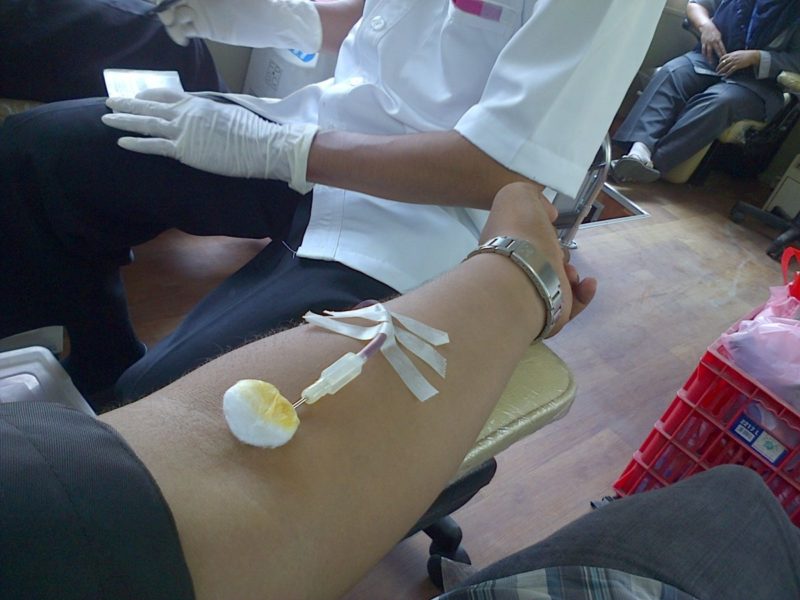Are you thinking about how long you can store blood for donation? Units acceptable for transfusion are tagged and kept after lab tests are received. Blood may be kept in freezers for long to 6 weeks at 6 degrees Celsius. Experts can control clots in provocateurs for 4–5 days at ambient temperature.
Blood and plasma are frozen and kept for a long to a year, just in freezers.
On the other hand, in a blood bank freezer, we should always maintain red cells and whole plasma at room temperature of +2 to +6 degrees Celsius. Heat monitoring and warning sensors and a cooling fan are installed into the blood center freezer to guarantee uniform dispersion of cooler air all across the equipment.
How Long Are Red Blood Cells Stored?
How long you can store blood for donation? By removing the plasma from whole blood(WB), physicians can produce red blood cells. According to coagulant use, hemoglobin has a lifespan of up to 42 days. Therefore, a freezer is needed for the storage and transportation of red blood cells. On the other hand, experts can sterilize and freeze red blood cells for up to ten years.
Excellent Tips To Store Blood For Donation
Blood samples taken from the patients must be stored in particular ways to ensure the quality of the model and extremely accurate outcomes after a donation of blood. In addition, the sort of way blood is drawn, transmitted, and significantly preserved impact its long-term survival.
#1. Take a piece of blood that is large enough to be examined easily for a sample size
The size of the sample which is under observation must be significant. Even every drop of blood should have been enough to undertake two of the required tests, whether singly or in multiple processors. A blood test cannot be verified or duplicated if the volume of blood is less than 0.50. Therefore, a decent general rule to measure the blood volume is to gather 2 to 2.5 times the amount recommended for the test.
Experts must check blood Samples as soon as possible after being drawn.
Typically samples are contained, even; even within four hours. After two hours of drawing blood, specimens should be extracted from whole blood. According to the testing requirement, chemicals such as a clotting activator, inhibitor, or penicillin may collect the blood samples. Every chemical has a varied effect on blood experimental verification and preservation(storage).
#2. The optimum temperature at which blood stored
It is a challenge to keep the blood in a good state, especially if it is out of the body, but despite that, we are still called to help and donate blood to save lives. That is why blood donation is important. But thankfully, we can now store blood without worrying about it drying out. And that is placing it on cold storage. So blood samples are stored at three different temperatures:
- Room temperature
- Freezing point
- Refrigerated temp
Temperature is based on the purpose for which blood is stored. The room temperature is considered between 15 and 30 degrees Celsius for blood storing; the fridge’s temperature is around 2 and 10 degrees Celsius, and the freezing temperature is around 20 degrees Celsius.
With such a large variety of allowable temperatures for blood storage, blood storage is mainly used for specific DNA testing that can hold steady for several days. While DNA is durable for up to 30 days at ambient temperature, living blood cells begin to die following two days; thus, specimens should be maintained or stored in a freezer for later use.
#3. Blood storage length
According to blood banks, the blood has expired after six months.
Research at Georgetown University showed that hemoglobin becomes less efficient, not working correctly to make red blood cells. And when red blood cells are not produced, hemoglobin cannot transport the oxygen throughout the body, which means after three regarded preserved weeks, the stored blood sample is not supporting in making the red blood cells if transmitted into the patient body.
Blood that has been preserved for more than three weeks only. After this length, blood loses its adaptability and ability to blend into the body’s narrow vessels and capillaries.
Prolonged storage of blood without refrigeration or frozen conditions may impair the blood’s vitality, depending on blood intended usage. When stored blood is delivered to a patient, the plasma never returns the elasticity it dropped after three weeks in storage without being cooled.
Types Of Blood That Are Transfused
Are you wondering about how we can store long blood for donation? To get your answer read the information given below. But you can check this article about blood groups and compatibilities to learn more about what blood type is used for transfusion. Regardless, there are numerous types of blood transportation, some of which are listed below.
- Patients with anemia or vitamin deficiency are transplanted with red blood cells or compacted cells. It also aids in the improvement of plasma blood oxygen. We can keep it for 35–45 days at temperatures ranging from 1.0 to 6.0 degrees Celsius
- Platelet donation is given to patients with a weak immune system; they are kept for 5–7 days at room temperature. Single donor platelets have a higher platelet count but are more expensive than normal platelets
- People with liver problems, serious complications, or severe bruising may benefit from plasma transfusion. Fresh and frozen blood can be kept forever in a freezer for about -25 °C of temperature for a maximum of one year
It’s A Wrap!
Once again, medical experts can store blood for up to 6 weeks at 6 degrees Celsius.
And we can do this thanks to the advancement in technology and medicine. Well, thank you for sticking with us at the end! My friends, hopefully, you will learn about how long you can store blood for donation. For more related articles, read this one on “How much hemoglobin drops after blood donation?”

